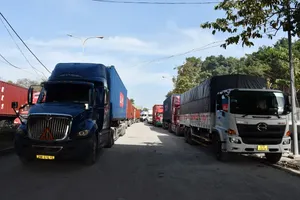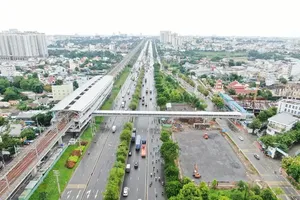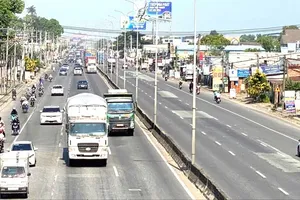
Statistics from the Transport Development and Strategy Institute (TDSI) reveal that the number of registered motorcycles in operation has increased by an average of 9.1 percent per year from 2005 to 2022. Currently, there are about 70 million registered motorcycles in Vietnam, over 45 million of which are used daily.
The Vietnam Association of Motorbike Manufacturers (VAMM) reports that over 600,000 motorcycles were sold in the first quarter of 2024. This demonstrates that two-wheeled motorcycles remain the primary mode of transportation for people, especially in large cities like Hanoi and HCMC.
From an environmental perspective, motorcycles are a major contributor to air pollution due to their significant exhaust emissions. According to research by the Institute of Environment and Resources (Vietnam National University-HCM), motorcycles account for about 29 percent of NO emissions, 90 percent of CO emissions, 65.4 percent of NMVOC emissions, 37.7 percent of dust emissions, and 31 percent of fine dust emissions.
Another worrying report by the Transport Ministry shows that the average CO2 emissions from vehicles have increased by 6-7 percent each year, and it is projected that by 2030, nearly 90 million tons of CO2 will be emitted. Road transport is the largest source of CO2 emissions, accounting for about 80 percent of total emissions.
Therefore, to achieve carbon neutrality by 2050 as the Prime Minister has committed, it is necessary to address the issue of controlling and reducing emissions from motorcycles now.
According to the Law on Road Traffic Order and Safety, motorcycle emissions testing will take effect as of January 1, 2025. However, emissions testing for all motorcycles will be implemented according to the roadmap of related laws.
Specifically, the implementation roadmap will be applied in accordance with the Environmental Protection Law. The Ministry of Natural Resources and Environment will be in charge of this, coordinating with the Ministry of Transport to develop and submit the roadmap to the Prime Minister for a decision.
According to environmental experts, there must be detailed testing criteria for motorcycle emissions just like the one for cars, along with suitable categorization tasks based on vehicles’ age. Vehicles that have already been introduced to the market but have not yet been emissions tested will be prioritized in the first stage. Following that are tests for motorbikes depending on their age. New vehicles under 2 years old do not need to be tested.
Chairman Le Trung Tinh of the HCMC Passenger Transport Association stated that to effectively control emissions from two-wheeled vehicles, a specific implementation roadmap is needed, first by announcing allowable emission thresholds. Next, two-wheeled vehicles should be classified for testing.
The first to be tested should be old vehicles, self-made vehicles, and vehicles lacking parts such as lights, fenders, and exhaust pipes. This will be followed by other vehicles according to their age.
The Ministry of Transport should study and announce the initial exemption period for inspection to correspond to the manufacturer's technical quality, as currently, new vehicles are all inspected before being introduced to the market. In addition, the re-inspection cycle needs to be reasonably regulated according to the manufacturer's proposal.
Regarding vehicles that do not meet the standards during inspection, Chairman Tinh suggested that appropriate solutions are needed because most old and self-made vehicles that emit black smoke into the environment are cargo ones of low-income workers.
Therefore, in addition to controlling emissions for these vehicles, state agencies need to pay attention to social welfare policies for their owners, as this is their means of daily livelihood. In fact, policies on emission control have been issued by state agencies in the past, but they have not been able to be implemented due to many difficulties. Therefore, for motorcycle emissions testing to be effective, a longer-term roadmap is needed for people to gradually accept and adjust.
Article 42 of the Law on Road Traffic Order and Safety stipulates that to ensure technical safety and environmental protection for motor vehicles and specialized motorcycles participating in road traffic:
- Motor vehicles and specialized motorcycles participating in road traffic must be inspected as prescribed.
- Inspection of motorcycles shall only be conducted for emissions. Emissions testing shall be conducted in accordance with environmental law provisions at emissions testing facilities that meet national technical standards.
























